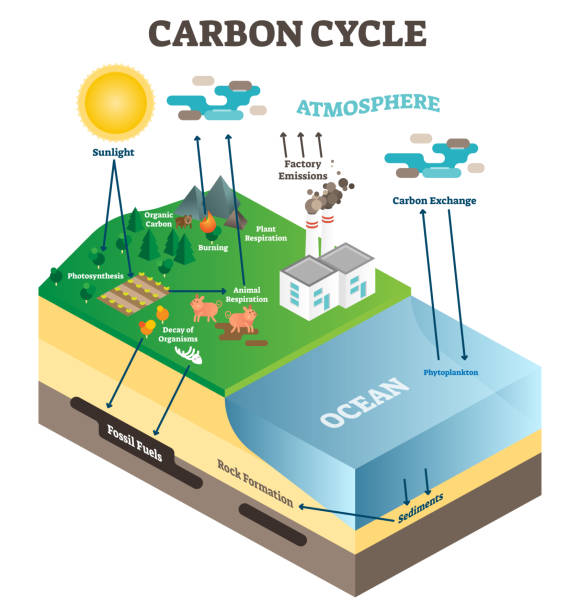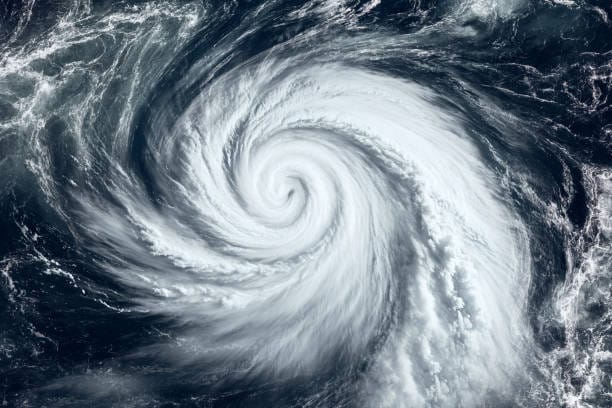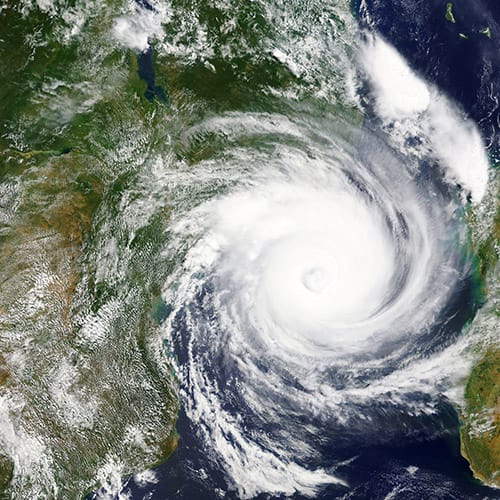On a calm night when the sky is clear and the stars twinkle like diamonds on a velvet canvas, the Moon rises silently above the horizon. It glows softly, not with its own light, but as a mirror of the Sun’s brilliance. Yet despite its borrowed glow, this ancient satellite holds sway over the Earth in ways both poetic and profound. Its presence has enchanted poets, guided sailors, sparked myths, and more than anything else, pulled on the waters of our world with a silent, invisible force.
The Moon does not shout. It doesn’t blaze or roar. But it moves oceans. It alters the rhythm of our planet’s tides and even whispers subtle suggestions into the workings of weather patterns. Understanding how the Moon affects Earth’s tides and weather is a story that stretches back to the origins of the solar system and unfolds with a graceful interplay of gravity, motion, and the elegant mathematics of celestial dance.
The Moon’s Gravitational Tug: A Celestial Puppeteer
Long ago, before life crawled from the sea, the Moon began its silent orchestration of Earth’s tides. The primary actor in this ancient performance is gravity, that mysterious force that binds planets in orbit, holds oceans to Earth, and connects all matter in an endless cosmic embrace. The Moon’s gravity pulls on the Earth, and more specifically, on its oceans.
Imagine Earth as a spinning globe surrounded by a vast blanket of water. The Moon, relatively close compared to other celestial bodies, exerts its gravitational pull on this water. This pull causes the water to bulge slightly on the side of Earth facing the Moon. But gravity isn’t the only force in play. As Earth spins, centrifugal force causes another bulge on the opposite side, where the Moon’s pull is weakest.
This results in two high tides on opposite sides of the planet at any given moment: one facing the Moon and one directly opposite. In between these bulges lie the low tides. As Earth rotates, different regions move through these bulges, experiencing the regular rise and fall of the sea we know as tides. This daily rhythm, set not by the Sun or winds but by the Moon, has shaped the lives of coastal creatures, human fishing traditions, and the very shape of our continents for billions of years.
Spring Tides and Neap Tides: When the Sun Joins In
Though the Moon is the dominant conductor of Earth’s tides, it does not play alone. The Sun, despite being nearly 400 times farther away, also contributes to tidal forces—thanks to its enormous mass. When the gravitational forces of the Sun and Moon align, they amplify the tides. These are known as spring tides, not because of the season, but from the idea of water “springing forth.”
Spring tides occur during new and full moons, when the Sun, Moon, and Earth form a straight line. During these times, the tidal range—the difference between high tide and low tide—is at its greatest. Conversely, when the Sun and Moon form a right angle with Earth, during the first and third quarters of the Moon’s phase, their gravitational forces partially cancel each other out, leading to lower tidal ranges known as neap tides.
This cyclical dance repeats every month, echoing through ecosystems and human activities. The predictable timing of tides has allowed for the development of tidal calendars, used by fishermen, sailors, and scientists alike. And this celestial choreography has continued for eons, even as continents drift and climate shifts.
Tides Beyond the Shore: Underwater Currents and Life’s Rhythm
Tides are not merely about the dramatic rise and fall of coastal waters. Their influence reaches deep into the ocean’s heart, where tidal forces stir vast underwater currents and affect marine life in subtle but crucial ways. The Moon’s pull generates tidal currents that help circulate nutrients, mix warm and cold waters, and maintain the delicate balance of marine ecosystems.
In estuaries and shallow bays, tidal flow creates dynamic environments where salinity, oxygen, and temperature fluctuate regularly. These conditions foster incredible biodiversity, giving rise to rich habitats such as mangroves, salt marshes, and coral reefs. Many marine species time their reproductive cycles to the lunar calendar, laying eggs or spawning during specific tidal conditions to ensure the greatest chance of survival.
The Moon is thus not only the guardian of the tides but also a life-giver to countless oceanic species. From tiny plankton to massive whales, many forms of sea life dance to the rhythm of the Moon.
How Tides Shape Earth’s Climate
While the connection between tides and daily weather may be subtle, the Moon’s long-term influence on Earth’s climate is profound. Tidal forces help regulate the planet’s rotation and axis stability—critical factors in climate dynamics.
The gravitational interaction between Earth and the Moon causes tidal friction, which slowly decelerates Earth’s rotation. This process also pushes the Moon away at about 3.8 centimeters per year. As Earth slows down, the days gradually grow longer. In the distant past, days were shorter—only about 18 hours during the age of the dinosaurs. This slowing affects global atmospheric circulation patterns over geologic timescales.
More importantly, the Moon helps stabilize Earth’s axial tilt, which is responsible for the changing seasons. Without the Moon, Earth’s tilt could vary wildly due to gravitational perturbations from the Sun and other planets. Such instability could lead to severe climate swings, potentially rendering large parts of the planet uninhabitable. The Moon acts like a gyroscope, gently keeping Earth’s orientation in check, preserving a climate conducive to life.
The Moon and Weather: Myth and Mystery
Humans have long believed that the Moon affects not only tides but also the weather. Farmers in ancient cultures planted crops according to the lunar calendar. Sailors read the Moon’s face to predict coming storms. Even today, some fishermen and surfers swear by the Moon’s influence on waves, winds, and rain. But is there truth in these beliefs?
The link between the Moon and short-term weather patterns is still a matter of scientific investigation. Unlike the well-understood mechanics of tides, the Moon’s effect on weather is far more subtle and indirect. However, modern studies have begun to reveal intriguing possibilities.
For instance, atmospheric tides—similar to ocean tides—do exist. These are caused by the Sun’s heating and, to a lesser extent, the Moon’s gravitational pull. While solar atmospheric tides are stronger, lunar tides do have a measurable effect, especially in the upper atmosphere. They can influence pressure systems, cloud formation, and even the propagation of storms.
Recent research has also suggested that the lunar cycle can slightly affect rainfall. Some studies have shown that precipitation may increase slightly during full and new moons, when gravitational forces are strongest. The differences are small—often within the margin of error—but consistent enough to suggest a real, if faint, lunar fingerprint on the weather.
Additionally, there’s evidence that the Moon may modulate thunderstorm activity in tropical regions. The mechanism is not fully understood but may involve subtle interactions between gravitational tides and atmospheric convection.
Lunar Influence on Human Behavior: Science and Superstition
No discussion of the Moon’s influence would be complete without touching on its alleged effects on human behavior. The word “lunacy” itself stems from Luna, the Roman goddess of the Moon, reflecting a long-held belief that full moons affect human mood, mental health, and behavior.
Emergency rooms, police stations, and maternity wards have all reported busier nights during full moons. Yet when researchers examine these claims with rigorous data, the evidence remains mixed. Some studies suggest a slight uptick in certain behaviors, while others find no statistical correlation.
One possibility is that the full Moon’s increased brightness disrupts sleep patterns, especially in the absence of artificial lighting. Poor sleep, in turn, can exacerbate mood disorders or impulsive behavior. However, in today’s world of electric lights and screens, the full Moon’s glow may not have the same impact it once did.
What’s clear is that the Moon exerts a powerful psychological presence in our lives, even beyond its gravitational reach. It connects us to nature, to cycles, to time itself. Whether through tides or tradition, the Moon shapes the rhythm of life on Earth.
A Moonless Earth: A Hypothetical Nightmare
To understand the Moon’s importance, imagine for a moment that it vanished. No more silver disk lighting the night sky, no more lunar eclipses, no more pull on the tides. Earth would be a profoundly different planet—and not in a good way.
Without the Moon, tidal ranges would diminish dramatically. This would devastate intertidal ecosystems and disrupt ocean circulation. The lack of tidal mixing could lead to more stagnant oceans, reduced oxygen levels, and weakened nutrient transport. Life in the sea—and by extension, on land—would suffer.
Worse still, Earth’s axial tilt could vary wildly without the Moon’s stabilizing influence. The planet might swing between ice ages and superheated epochs within centuries. Climate patterns would become chaotic, making agriculture and civilization difficult, if not impossible.
In short, the Moon is not just a beautiful neighbor in the sky. It is Earth’s silent guardian, holding our world in balance.
The Future of the Moon-Earth Connection
As the Moon continues to drift away from Earth—albeit at a snail’s pace—its influence will slowly wane. Tidal ranges will diminish. Days will grow longer. In a few billion years, Earth’s rotation could become locked with the Moon’s orbit, just as the Moon already shows only one face to Earth. At that point, one side of the Earth would always face the Moon, while the other would live in lunar absence.
While that scenario lies in the distant future, scientists today are working to better understand the Moon’s impact using satellites, ocean buoys, and atmospheric sensors. Lunar research is also picking up pace, with space agencies planning new missions to study the Moon’s surface, geology, and potential for supporting future human bases.
These missions are not just about going to the Moon—they’re about understanding Earth. The Moon’s ancient rocks hold clues about the early solar system, and its gravitational pull continues to shape our world in ways we’re only beginning to fully comprehend.
Conclusion: A Partner in the Cosmic Dance
The Moon does not rise each night for spectacle alone. It comes to remind us of something deeper: that our world is part of a larger rhythm, a cosmic dance choreographed by invisible forces. Through gravity and light, it tugs at the oceans, nudges the atmosphere, and perhaps even stirs the soul.
Its effect on tides is profound, precise, and scientifically proven. Its impact on weather is subtle, still being studied, but likely real. And its influence on human culture and imagination is incalculable. The Moon is not just a companion—it is a quiet partner in the shaping of life on Earth.
So the next time you see the Moon casting its silver glow across the ocean or peeking through a blanket of clouds, know that it’s not just watching—it’s moving, guiding, and sustaining the rhythms of our world.






